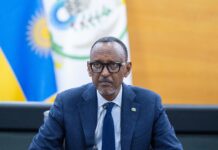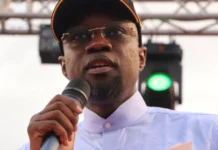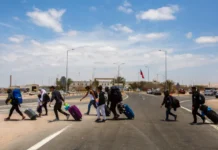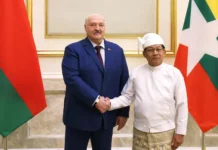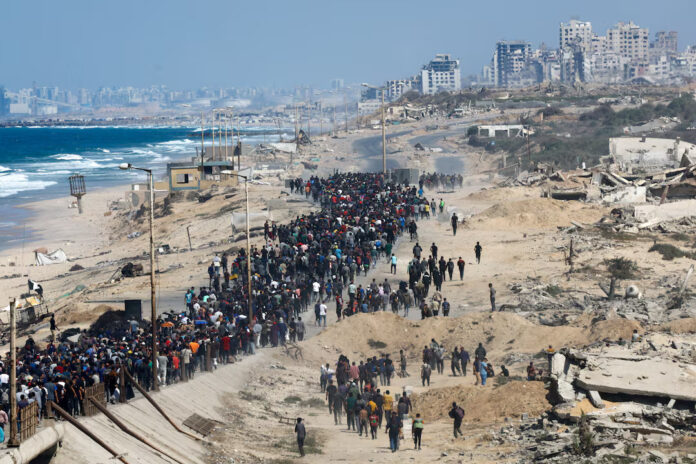
Thousands of displaced Palestinians made their way across the devastated landscape of Gaza on Friday, returning to the ruins of their homes after a long-awaited ceasefire took effect and Israeli troops began pulling back under the first phase of a U.S.-brokered agreement to end the war.
A vast stream of civilians, many barefoot or pushing carts, walked north along the coastal road toward Gaza City, once the enclave’s bustling heart, now a wasteland of shattered buildings and sand.
“Thank God my house is still standing,” said 40-year-old Ismail Zayda in the Sheikh Radwan district. “But the place is destroyed, my neighbours’ houses are destroyed, entire districts have gone.”
In the south, residents returned to Khan Younis, Gaza’s second-largest city, only to find it reduced to rubble. “We went to our area. It was exterminated,” said Ahmed al-Brim, who pushed a bicycle loaded with scraps of wood for firewood. “We don’t know where we will go after this. Nothing is left.”
Palestinian health authorities said rescue teams recovered 100 bodies from various areas following the Israeli army’s withdrawal.
The truce marks the most significant step yet toward halting two years of bloodshed that began after Hamas’s deadly October 7, 2023, assault on Israel. The ceasefire is part of U.S. President Donald Trump’s 20-point peace plan, which he said would “bring an end to the endless fighting.”
Speaking at the White House, Trump expressed optimism that the truce would hold: “They’re all tired of the fighting.”
Under the first phase of the plan, Israeli forces began retreating from Gaza’s urban centers at noon local time (0900 GMT), while retaining control of over half the territory.
In return, Hamas has 72 hours to release the remaining 20 Israeli hostages still believed to be alive. Israel will free 250 Palestinians serving long prison sentences and another 1,700 detainees captured during the war.
Humanitarian aid convoys are also set to surge into Gaza, carrying food and medical supplies.
Israeli Prime Minister Benjamin Netanyahu, in a televised address, vowed that his country would ensure Hamas’s disarmament: “If this is achieved the easy way, that will be good. If not, it will be achieved the hard way.”
Trump confirmed he would travel to the Middle East on Monday for talks in Israel and Egypt and to address the Knesset, the first speech to Israel’s parliament by a U.S. president since 2008. He is also expected to announce an international summit on Gaza in Cairo.
The next phase of Trump’s plan envisions an international “Board of Peace,” led by Trump and including former British Prime Minister Tony Blair, to oversee Gaza’s postwar administration. But Hamas swiftly rejected what it called “foreign guardianship,” insisting Gaza’s governance must remain a Palestinian matter.
Despite the fragile peace, many Gazans said they were simply relieved to go home. “There are no houses, only rubble,” said Mahdi Saqla, 40, as he walked toward Gaza City with his family. “But even standing over the ruins is better than being in exile.”
Hamas’s exiled Gaza chief, Khalil al-Hayya, said the group had received guarantees from the United States and regional mediators that the war was over. But uncertainty remains.
Questions persist over who will govern the devastated territory, and whether Israel’s demand that Hamas disarm can be enforced without reigniting conflict.
For now, Gaza’s streets echo with footsteps of return, weary, cautious, and uncertain, but filled with the fragile hope that two years of war may finally be ending.
Source: Reuters
Written By Rodney Mbua










